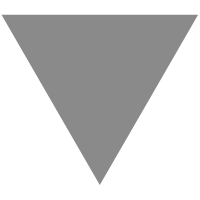

GitHub - deepmind/graph_nets: Build Graph Nets in Tensorflow
source link: https://github.com/deepmind/graph_nets
Go to the source link to view the article. You can view the picture content, updated content and better typesetting reading experience. If the link is broken, please click the button below to view the snapshot at that time.
README.md
Graph Nets library
Graph Nets is DeepMind's library for building graph networks in Tensorflow and Sonnet.
Contact [email protected] for comments and questions.
What are graph networks?
A graph network takes a graph as input and returns a graph as output. The input graph has edge- (E ), node- (V ), and global-level (u) attributes. The output graph has the same structure, but updated attributes. Graph networks are part of the broader family of "graph neural networks" (Scarselli et al., 2009).
To learn more about graph networks, see our arXiv paper: Relational inductive biases, deep learning, and graph networks.
Installation
The Graph Nets library can be installed from pip.
This installation is compatible with Linux/Mac OS X, and Python 2.7 and 3.4+.
To install the library, run:
$ pip install graph_nets
Usage example
The following code constructs a simple graph net module and connects it to data.
import graph_nets as gn import sonnet as snt # Provide your own functions to generate graph-structured data. input_graphs = get_graphs() # Create the graph network. graph_net_module = gn.modules.GraphNetwork( edge_model_fn=lambda: snt.nets.MLP([32, 32]), node_model_fn=lambda: snt.nets.MLP([32, 32]), global_model_fn=lambda: snt.nets.MLP([32, 32])) # Pass the input graphs to the graph network, and return the output graphs. output_graphs = graph_net_module(input_graphs)
Demo Jupyter notebooks
The library includes demos which show how to create, manipulate, and train graph networks to reason about graph-structured data, on a shortest path-finding task, a sorting task, and a physical prediction task. Each demo uses the same graph network architecture, which highlights the flexibility of the approach.
Try the demos in your browser in Colaboratory
To try out the demos without installing anything locally, you can run the demos in your browser (even on your phone) via a cloud Colaboratory backend. Click a demo link below, and follow the instructions in the notebook.
Run "shortest path demo" in browser
The "shortest path demo" creates random graphs, and trains a graph network to label the nodes and edges on the shortest path between any two nodes. Over a sequence of message-passing steps (as depicted by each step's plot), the model refines its prediction of the shortest path.
Run "sort demo" in browser
The "sort demo" creates lists of random numbers, and trains a graph network to sort the list. After a sequence of message-passing steps, the model makes an accurate prediction of which elements (columns in the figure) come next after each other (rows).
Run "physics demo" in browser
The "physics demo" creates random mass-spring physical systems, and trains a graph network to predict the state of the system on the next timestep. The model's next-step predictions can be fed back in as input to create a rollout of a future trajectory. Each subplot below shows the true and predicted mass-spring system states over 50 steps. This is similar to the model and experiments in Battaglia et al. (2016)'s "interaction networks".
Run the demos on your local machine
To install the necessary dependencies, run:
$ pip install jupyter matplotlib scipy
To try the demos, run:
$ cd <path-to-graph-nets-library>/demos $ jupyter notebook
then open a demo through the Jupyter notebook interface.
Recommend
About Joyk
Aggregate valuable and interesting links.
Joyk means Joy of geeK




